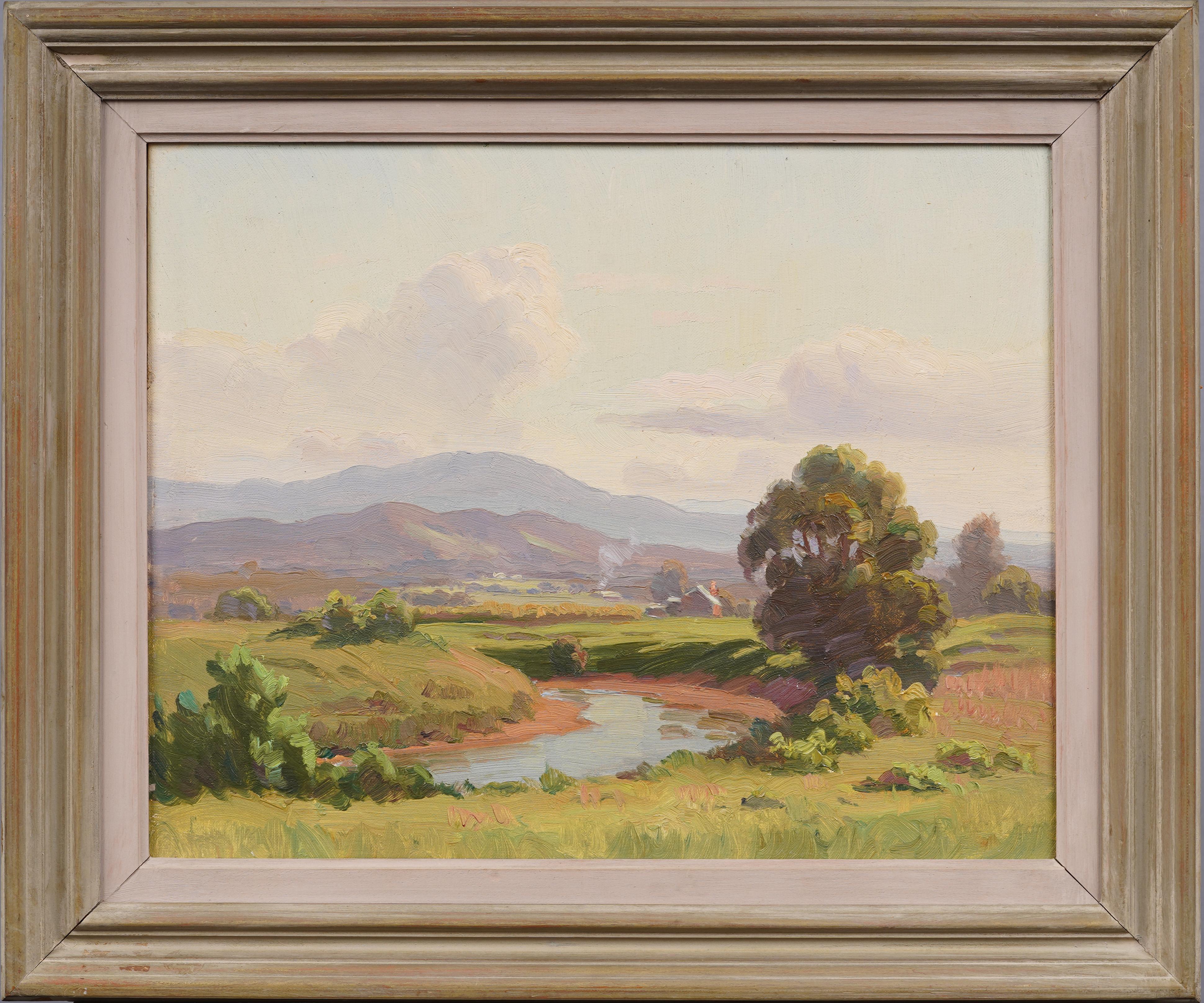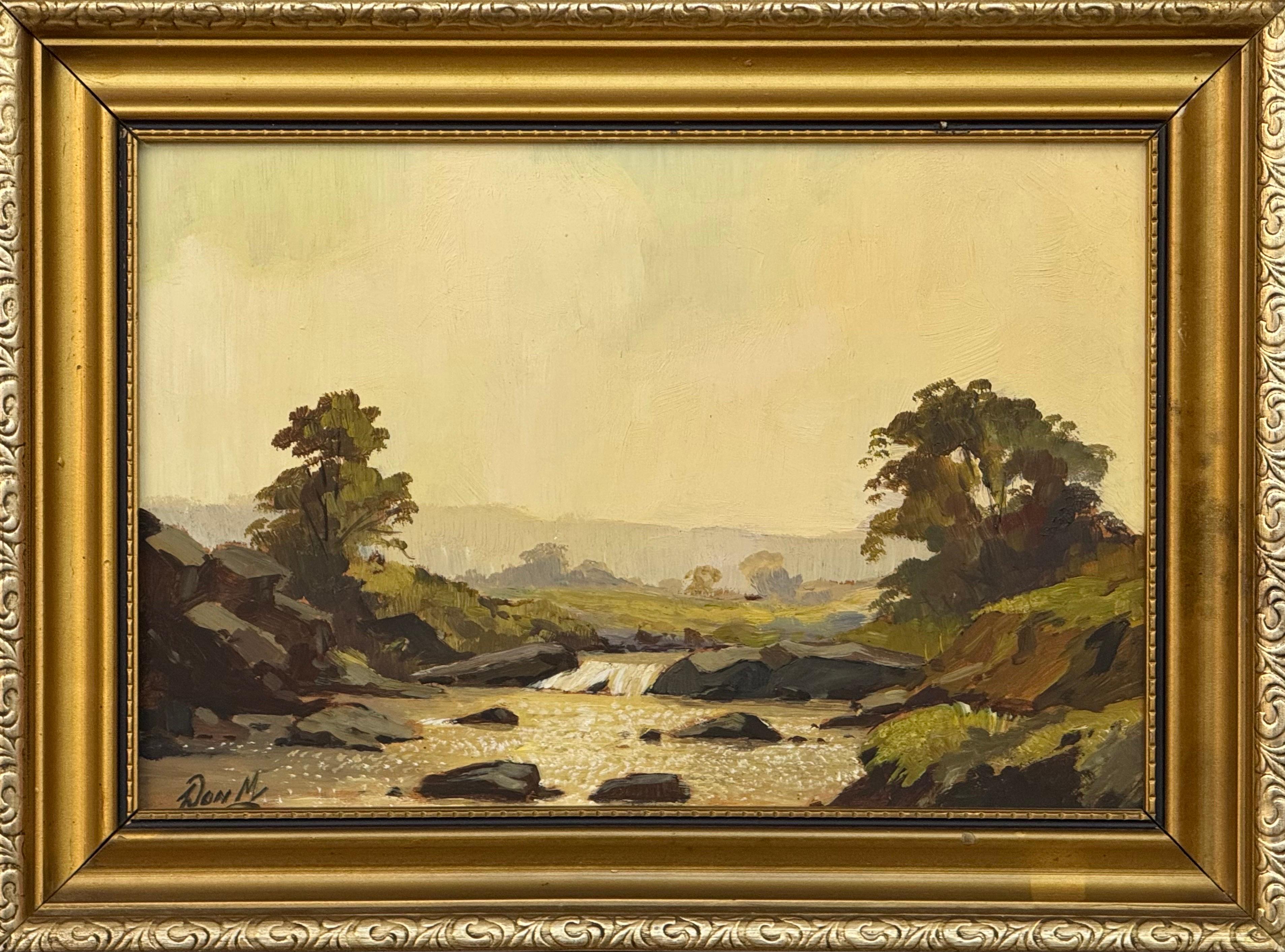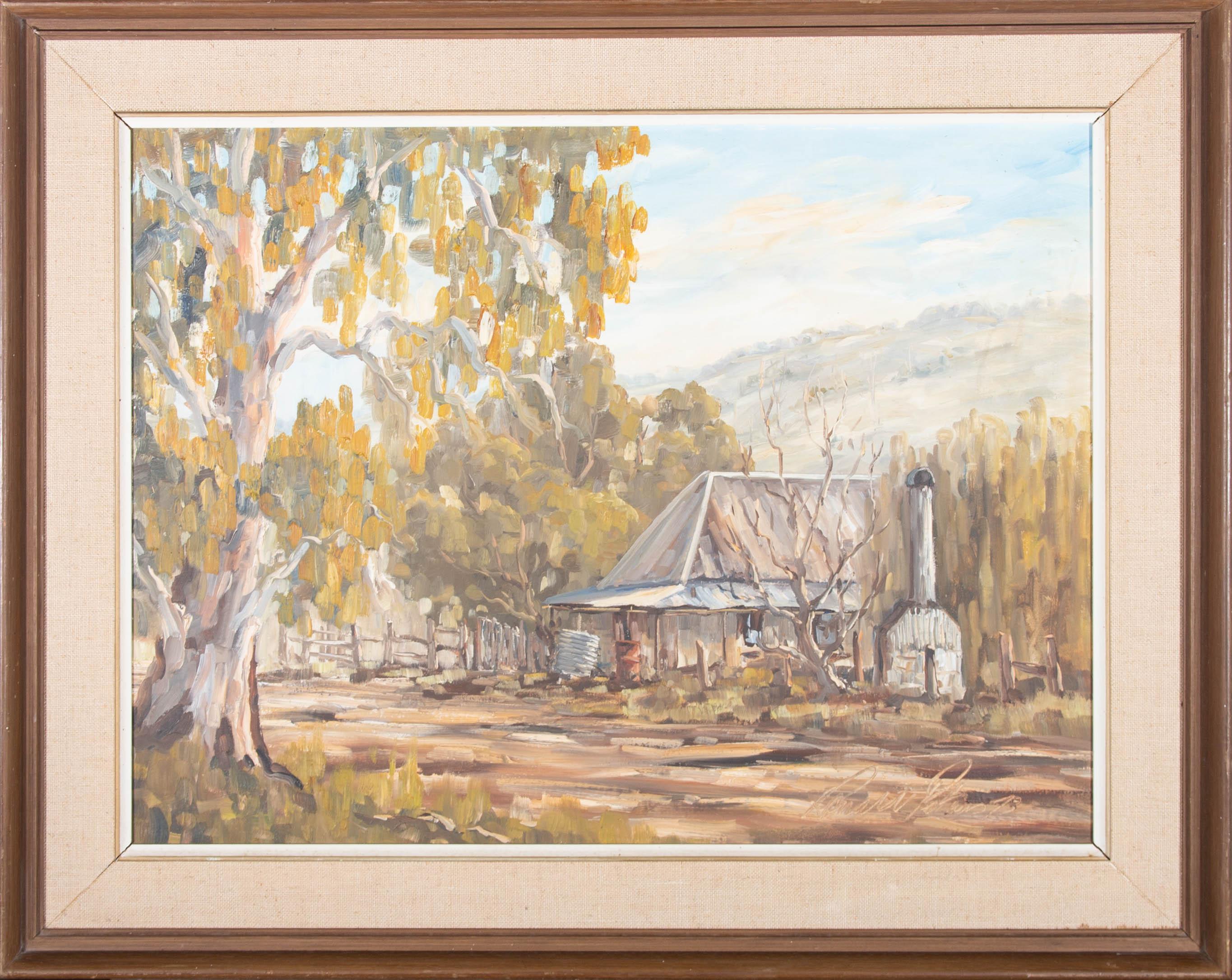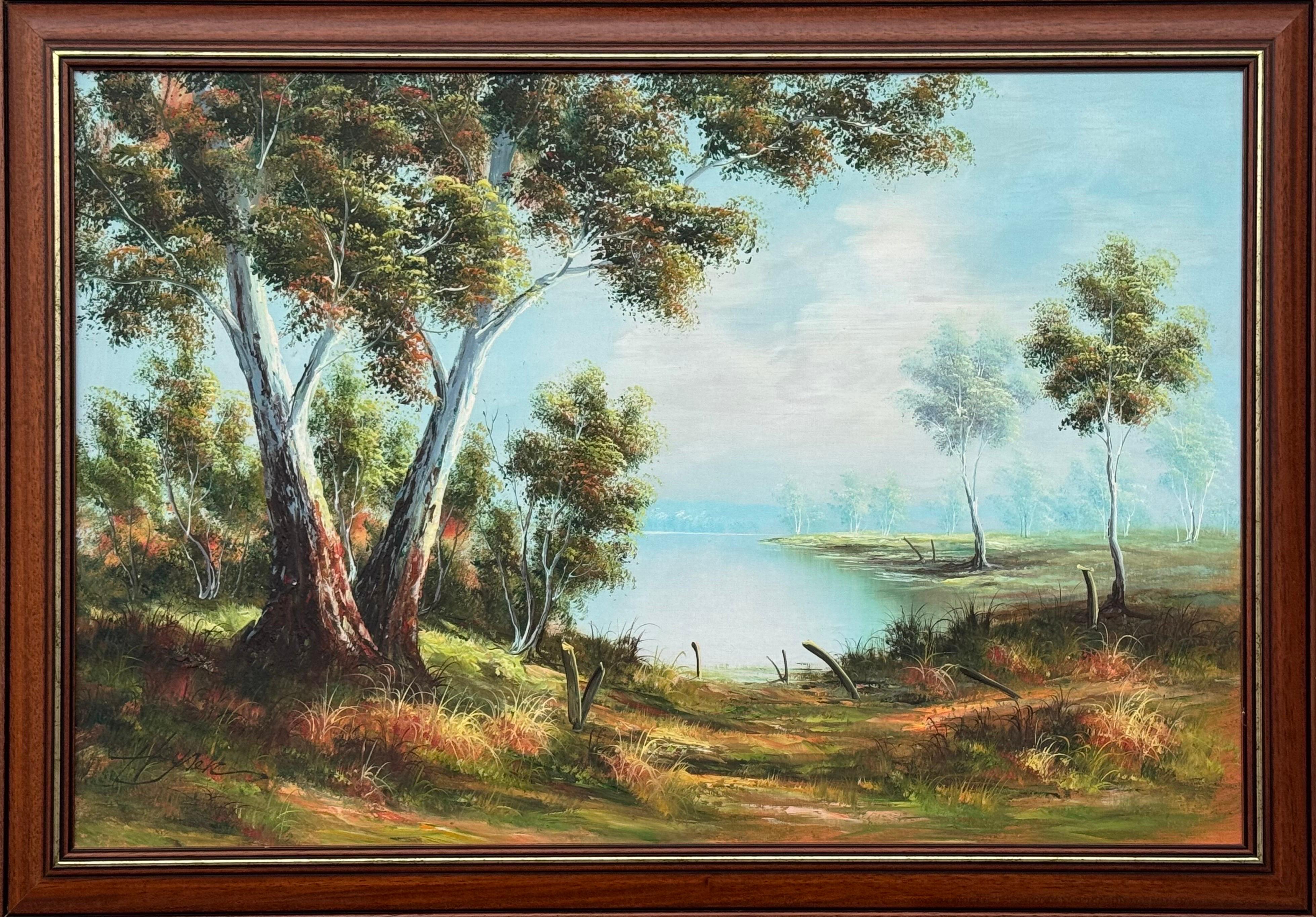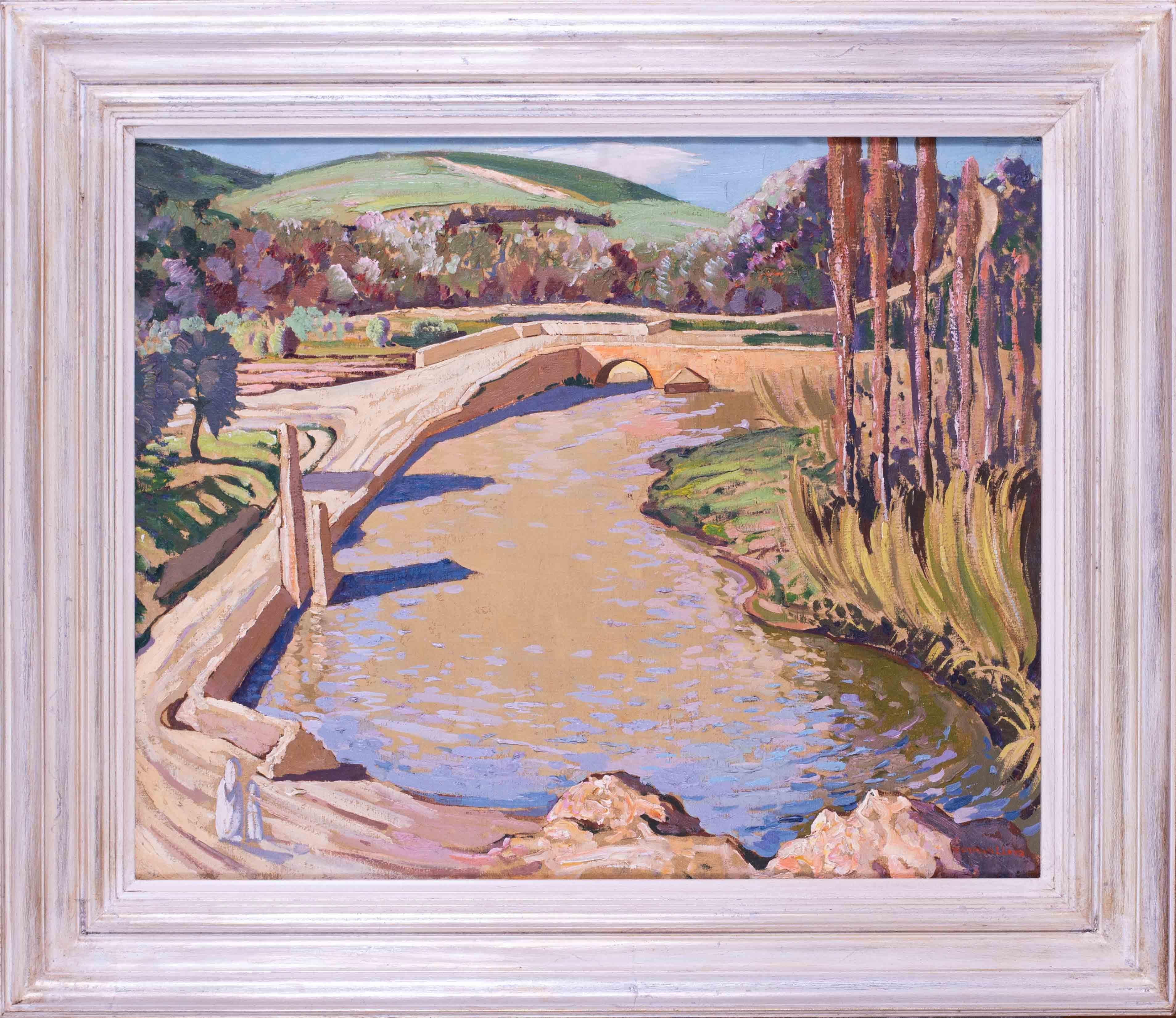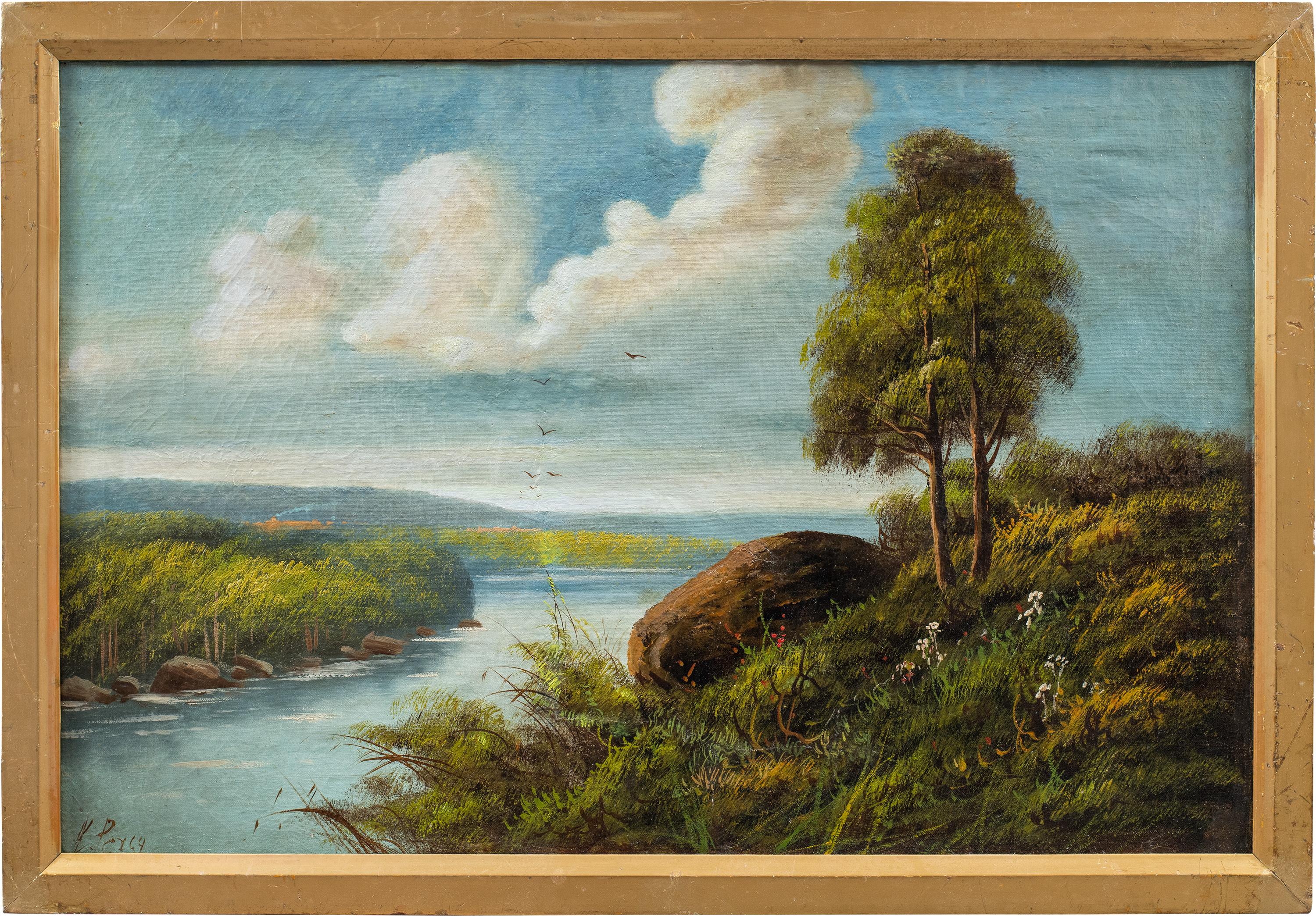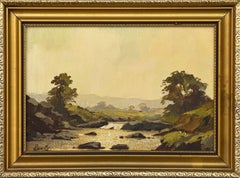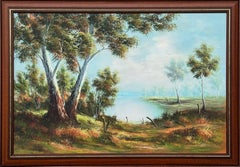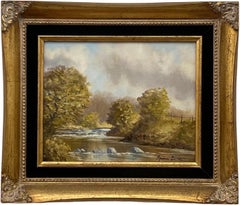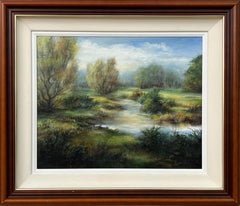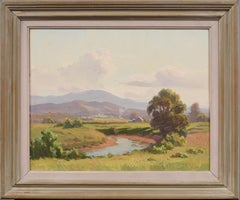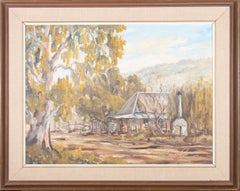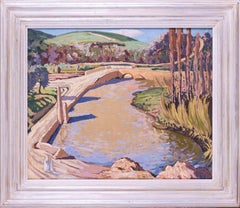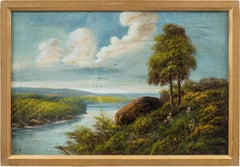Items Similar to Australian River Landscape Painting by 20th Century English Australian Artist
Video Loading
Want more images or videos?
Request additional images or videos from the seller
1 of 18
Howard BarronAustralian River Landscape Painting by 20th Century English Australian Artist1970
1970
$1,370.17
$2,356.6941% Off
£1,000
£1,72041% Off
€1,166.45
€2,006.2941% Off
CA$1,876.79
CA$3,228.0741% Off
A$2,087.40
A$3,590.3241% Off
CHF 1,089.97
CHF 1,874.7541% Off
MX$25,401.38
MX$43,690.3841% Off
NOK 13,920.62
NOK 23,943.4641% Off
SEK 13,055.08
SEK 22,454.7541% Off
DKK 8,705.63
DKK 14,973.6941% Off
Shipping
Retrieving quote...The 1stDibs Promise:
Authenticity Guarantee,
Money-Back Guarantee,
24-Hour Cancellation
About the Item
Australian River Landscape Painting by 20th Century English Australian Artist, Howard Barron (1900–1991) depicting a scene along the Murrumbidgee River in Australia’s New South Wales.
Art measures 20 x 16 inches
Frame measures 24 x 20 inches
Background of Howard Barron (1900–1991)
Howard Barron was a British-born painter and draughtsman, educated in Kent and Sussex, who built a notable artistic career in both Australia and the UK . In 1924 he moved from England to Sydney, Australia to study art under Sir Will Ashton, a prominent landscape painter. Barron quickly gained recognition as an outstanding landscape artist, painting the Australian countryside around New South Wales – including the Newcastle area and along the Hawkesbury, Murrumbidgee, and Wollondilly Rivers . By 1933, one of his landscapes (Afternoon, Kangaroo Valley) was purchased by the Art Gallery of New South Wales, signaling his early success . Throughout the 1940s he also became known for portraiture – he was a finalist in the Archibald Prize multiple times – demonstrating his versatility . After World War II, Barron returned to England (and also spent time in France) in the late 1940s. During this period he received high-profile portrait commissions, including paintings of Sir Winston Churchill and Queen Elizabeth II . He even painted the famed Australian soprano Dame Nellie Melba (a portrait that now hangs in Australia House, London) . Barron eventually settled back in Australia in the late 1950s and lived there until his death in 1991 . His works are held in various public collections, reflecting his standing in both countries.
Artistic Style and Known Works:
Howard Barron’s artistic style was rooted in traditional representational painting, with a focus on landscapes and portraits. In Australia, he immersed himself in the landscape, likely painting en plein air, and developed a light-filled, naturalistic style influenced by the Australian Impressionist tradition. Contemporary accounts describe him as an “outstanding landscape painter,” which is evident in the vibrant rural scenes he produced . Barron often depicted the Australian countryside – rolling hills, rivers, gum trees and the distinct golden light of the outback – with a realism tempered by an atmospheric, painterly touch. For example, his early landscape Afternoon, Kangaroo Valley captured the bucolic scenery of New South Wales so convincingly that it was acquired by a national gallery . Other noted landscape works include Evening, Benangaroo and Burrinjuck Dam, which were finalists for the Wynne Prize (Australia’s prestigious landscape art award) in 1944 . These titles point to real locations in rural New South Wales, indicating Barron’s habit of drawing directly from actual scenery. Barron’s portraiture, on the other hand, showcased his academic training and attention to character. In the 1940s he pivoted to painting prominent figures; for instance, he was commissioned to paint two portraits of Winston Churchill after the war . His ability to capture likeness and stature made him a sought-after portraitist for dignitaries and celebrities. Barron exhibited in respected venues (such as the Royal Institute of Oil Painters in London and the St. Ives Society of Artists) and his paintings – whether landscapes or portraits – were known for their solid technique and a balance of detail with artistic expression . In summary, Barron’s style married realism with a gentle impressionistic quality, allowing him to authentically portray both the sunlit vistas of Australia and the personalities of his portrait subjects.
The Painting: Location and Inspiration
“The M’Bridge River” depicts a scene along the Murrumbidgee River in Australia’s New South Wales. Barron frequently painted the Murrumbidgee River and its surrounds – a region of inland NSW characterized by broad waterways, eucalyptus (gum) trees, and pastoral landscapes . In fact, Barron created works explicitly set on the Murrumbidgee (for example, Sandbanks of the Murrumbidgee River and The Murrumbidgee at Jugiong, NSW (1945), in the Queensland Art Gallery collection). The title “M’Bridge” appears to be an abbreviated reference to “Murrumbidgee,” which was one of Barron’s favorite painting locales. (It’s possible the apostrophe denotes a contraction; Barron’s focus on the Murrumbidgee makes it very likely that “M’Bridge River” is shorthand for that river’s name.) Notably, no actual place name “M’Bridge” is known to exist as a geographic location on its own – further suggesting the painting’s title is a stylistic or shorthand label rather than a different locale.
Given Barron’s Australian period and subjects, the landscape in M’Bridge almost certainly reflects the Australian countryside. Viewers familiar with Australian river landscapes will recognize elements like the dry scrub and gum trees along a wide riverbank, which are emblematic of the Murrumbidgee region (spanning parts of southern New South Wales and the Australian Capital Territory). This area often features gently rolling hills and a river with sandy or pebbled banks – imagery that matches the mood of Barron’s M’Bridge scene. The coloring and vegetation in the painting (as seen in reproductions and similar works) resemble the sunny, earthy tones of the outback rather than the lush greens of European landscapes, pointing to Australia as the setting. Barron’s artistic focus reinforces this interpretation: during his years in Australia he gravitated to painting rivers like the Hawkesbury and Murrumbidgee, capturing their distinctive light and topography . It’s therefore highly likely that “M’Bridge” is not an imaginary scene but drawn from a real spot along the Murrumbidgee River, filtered through Barron’s artistic eye.
In terms of pinpointing a specific location, the painting may condense generic features of the Murrumbidgee rather than depict a named landmark. Barron did sometimes title works after exact places (Kangaroo Valley, Burrinjuck Dam, etc.), but “M’Bridge” is a more generalized label. It suggests that Barron intended viewers to appreciate the overall natural setting – the interplay of water, sky, and land – instead of focusing on a famous site. Thus, the scene likely corresponds to a typical river vista in rural New South Wales that Barron experienced, rather than an officially recognized spot called “M’Bridge.” However, because the Murrumbidgee was a genuine inspiration, the painting can be seen as portraying a real environment (the Australian riverine landscape) rather than a purely invented one. In summary, The M’Bridge River most plausibly represents the Murrumbidgee River region in Australia, aligning with Howard Barron’s known inspirations. It captures the essence of that landscape – to the point that anyone familiar with Australian bush scenes might sense its authenticity – even if the title itself is an abbreviated or artistic moniker for the location. This scene, therefore, is best understood as Barron’s artistic interpretation of a specific natural setting he knew well, rather than a completely fictional composite.
Howard Barron’s biographical details and career highlights are documented by the National Portrait Gallery, Australia and other art references. Auction records and art databases note Barron’s paintings of the Murrumbidgee River (sometimes listed under abbreviated titles) . The Art Gallery of NSW archives also list works like Burrinjuck Dam among Barron’s exhibited pieces , confirming his focus on that region. These references collectively support the identification of “M’Bridge” with the Murrumbidgee landscape in Australia.
- Creator:Howard Barron (1900 - 1991, Australian, British, English)
- Creation Year:1970
- Dimensions:Height: 20 in (50.8 cm)Width: 24 in (60.96 cm)Depth: 2 in (5.08 cm)
- Medium:
- Movement & Style:
- Period:
- Condition:Painting in Good Condition. Vintage frame is commensurate with age.
- Gallery Location:Preston, GB
- Reference Number:1stDibs: LU817315878442
About the Seller
5.0
Platinum Seller
Premium sellers with a 4.7+ rating and 24-hour response times
Established in 2005
1stDibs seller since 2017
325 sales on 1stDibs
Typical response time: <1 hour
- ShippingRetrieving quote...Shipping from: Preston, United Kingdom
- Return Policy
Authenticity Guarantee
In the unlikely event there’s an issue with an item’s authenticity, contact us within 1 year for a full refund. DetailsMoney-Back Guarantee
If your item is not as described, is damaged in transit, or does not arrive, contact us within 7 days for a full refund. Details24-Hour Cancellation
You have a 24-hour grace period in which to reconsider your purchase, with no questions asked.Vetted Professional Sellers
Our world-class sellers must adhere to strict standards for service and quality, maintaining the integrity of our listings.Price-Match Guarantee
If you find that a seller listed the same item for a lower price elsewhere, we’ll match it.Trusted Global Delivery
Our best-in-class carrier network provides specialized shipping options worldwide, including custom delivery.More From This Seller
View AllVintage River Landscape Oil in English Countryside - 20th Century British Art
By Don Micklethwaite
Located in Preston, GB
Vintage River Landscape Oil in English Countryside - 20th Century British Art
Art measures 11 x 7.5 inches
Frame measures 13 x 10 inches
Don Micklethwaite is a British Postwar & ...
Category
1970s English School Landscape Paintings
Materials
Oil, Board
Tranquil Australian Landscape with Eucalyptus Trees - Vintage 20th Century Art
Located in Preston, GB
Tranquil Australian Landscape with Eucalyptus Trees adjacent to a Lake - Vintage 20th Century Art. Original Painting, Signed Artwork.
Art measures 36 x 24 inches
Frame measures 40...
Category
Mid-20th Century Realist Landscape Paintings
Materials
Canvas, Cotton Canvas, Oil
$2,139 Sale Price
20% Off
Original Oil Painting of River Landscape in Ireland by 20th Century Irish Artist
By Manson Blair
Located in Preston, GB
Original Oil Painting of a River Landscape in County Tyrone, Ireland, by Irish Artist, Manson Blair. Presented in the original ornate frame.
Art measure...
Category
Late 20th Century Realist Landscape Paintings
Materials
Canvas, Oil
River Landscape Painting of a Summer Evening in Ireland by 20th Century Artist
Located in Preston, GB
River Landscape Painting of a Summer Evening in Ireland by 20th Century Artist, Doris Houston (Born 1948).
Her work is held in the collections of several Irish Museums.
Art measur...
Category
1990s Post-Modern Landscape Paintings
Materials
Oil, Board
Oil Painting of River Landscape in Ireland Countryside by Modern Irish Artist
By Tom Stephenson
Located in Preston, GB
Oil Painting of River Landscape in Ireland Countryside by Modern Irish Artist. This original oil painting is an early example of the more traditional...
Category
1980s Realist Landscape Paintings
Materials
Canvas, Oil
River Landscape Painting of Scottish Highlands by 19th Century British Artist
By Alfred de Breanski Sr.
Located in Preston, GB
River Landscape Painting of the Scottish Highlands by 19th Century British Artist, Alfred De Breanski Snr, (1852 - 1928). Signed on the front (l...
Category
Late 19th Century Realist Landscape Paintings
Materials
Canvas, Oil, Linen, Wood, Cotton Canvas
You May Also Like
Antique Signed Framed Australian Impressionist Victoria Landscape Oil Painting
Located in Buffalo, NY
Nicely painted impressionist landscape of Australia by Sir Erik Langker (1898 - 1982). Oil on board. Framed. Signed verso.
Category
1950s Impressionist Landscape Paintings
Materials
Canvas, Oil
Ronald Peters (1937-2003) - 1973 Oil, Australian Landscape
Located in Corsham, GB
A fine oil painting by the artist Ronald Peters, depicting a rural Australian landscape. Signed and dated to the lower right-hand corner. Presente...
Category
20th Century Landscape Paintings
Materials
Oil
$427 Sale Price
20% Off
Australian 20th Century oil painting of figures on riverside track, Norman Lloyd
Located in Petworth, West Sussex
Norman Lloyd (Australian, 1894 – 1983)
Figures on a riverside track
Oil on canvas
Signed ‘NORMAN LLOYD’ (lower right)
18 x 22 in. (45.7 x 55.8 cm.)
Norman Lloyd (1894–1983) was an A...
Category
20th Century Art Deco Landscape Paintings
Materials
Canvas, Oil
Sidney Richard Percy (Naturalistic British painter) - 19th century landscape
By Sidney Richard Percy
Located in Varmo, IT
Sidney Richard Percy (British, 1822 - 1886) - River landscape with swallows in flight.
51.5 x 76.5 cm without frame, 57.5 x 82.5 cm with frame.
Antique oil painting on canvas, in a...
Category
Mid-19th Century Naturalistic Landscape Paintings
Materials
Canvas, Oil
Doreen King - Australian School Mid 20th Century Oil, Peppermint Grove
Located in Corsham, GB
A delightful oil study depicting Peppermint Grove in Australia. Signed. Artist's label with title verso. Presented in a gilt frame. On canvas.
Category
20th Century Figurative Paintings
Materials
Oil
A. S. Gibson - 20th Century Oil, By the River
Located in Corsham, GB
Depicting a calm river running through a woodland area. The artist has captured the scene in gestural, sweeping brush strokes and a muted colour palette, adding to the relaxed atmosp...
Category
21st Century and Contemporary Landscape Paintings
Materials
Oil
$373 Sale Price
20% Off
More Ways To Browse
In Australia
Churchill Vintage
1940s British Painting
River Of No Return
Vintage Pebble Art
Winston Churchill Portrait
Oil Paintings English Landscapes 1970
1940s British Portraits
A Churchill Painting
Eucalyptus Painting
Vintage Signal Light
Eucalyptus Tree
Winston Churchill Paintings
Sir Winston
Gum Tree Painting
Howard Barron
Late 20th Century Eucalyptus Tree Painting
Harold Wood
